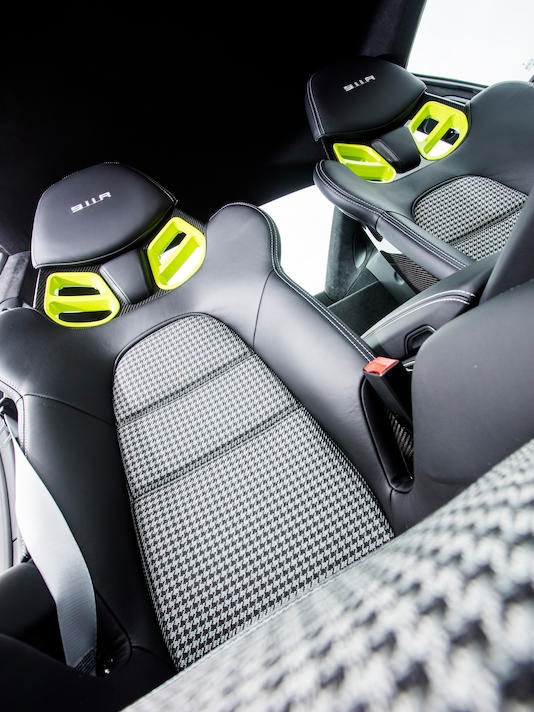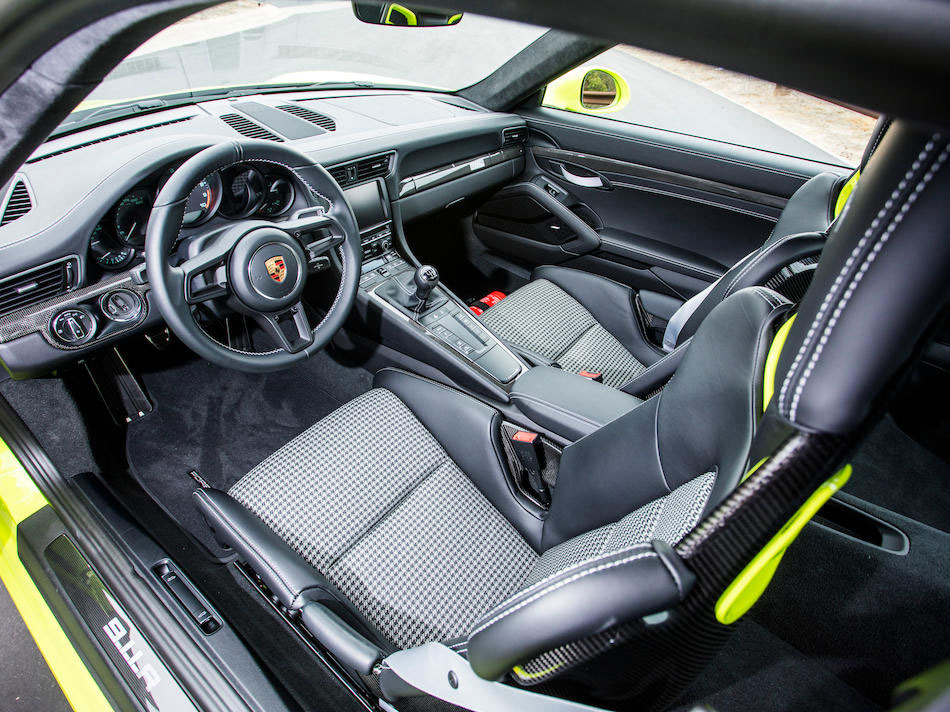Media | Articles
Everything you think you know about Porsche and Houndstooth seats is wrong
In popular culture, Houndstooth conjures images of Sherlock Holmes’ iconic deerstalker cap, the fedora made famous by Alabama football coach Paul “Bear” Bryant, and—in recent years—the shirt of choice for dimwitted Ricky LaFleur in the Canadian mockumentary Trailer Park Boys. But it doesn’t take a rocket appliance (thanks, Ricky) to know that Houndstooth means just one thing to automobile enthusiasts: the upscale upholstery option most often associated with 1960s Porsches (and the Chevrolet Camaro as well).
The problem is, the Porsche pattern that we all call “Houndstooth” isn’t actually Houndstooth at all.
Wait, what? Don’t be embarrassed, it’s easy to be fooled. For instance, Sherlock Holmes indeed wore a Houndstooth-patterned hat, but Bear Bryant and Ricky LaFleur wore something that only resembled it. So what upholstery are Porsche owners actually resting their cheeks on?
According to Recaro Automotive Seating, the German premium brand of the U.S. company Adient, the non-Houndstooth pattern is actually called Pepita, or Shepherd’s Check.
While the Houndstooth pattern looks like a bunch of little windmills, the Pepita design is made up of interconnected squares.
Marketplace
Buy and sell classics with confidence
20180622172153)
20180622172236)
20180622192027)
Although many assume that Porsche first used Houndstooth on the seats of the 1949–50 Porsche 356, that upholstery pattern was, in fact, another design entirely.
“In colloquial English, the word ‘Houndstooth’ might be used regularly when ‘Pepita’ would actually be the right description of the pattern,” says Ulrich Andree, Director Global Communications at Adient Communications, which includes Recaro. “The actual Houndstooth pattern was never used in an official Porsche seat or a Recaro seat made for Porsche.”
According to Recaro, when Reutter (Stuttgarter Karosseriewerk Reutter) started production of the Porsche 356 seats, it offered a number of optional seat covers, including one that carried a black-and-white pattern. The design was neither Houndstooth nor Pepita but a unique cloth design, and the fabric was made of nylon.
20180622193320)
Recaro, founded in 1963 by the Reutter family, first produced Pepita pattern for customers in December of that same year. The first Porsches to use the Pepita design were late 356C models. They were followed by the Porsche 901/911 and Porsche 912.
Recaro first presented the Recaro Sportsitz (Sport seat) at the 1965 International Auto Show in Frankfurt, and Porsche installed the Recaro Sportsitz as series equipment starting with the 911S in summer 1966. Customers could order Pepita covers as an option.
The last use of Pepita covers by Recaro is documented for the first generation of the Recaro Idealsitz (Ideal seat) in 1970–71. Pepita could be had not only in black-white, but also in brown-beige, blue-green, and red-beige.
Porsche again offered Pepita seats as an option for its 911 legacy model (celebrating 50 years) in 2013. These seats were not produced by Recaro.
20180622170733)
At the SEMA show in Las Vegas last November, Recaro announced the production of Recaro Expert Houndstooth seats, which combine retro-styling with modern comfort and performance features. And by “Houndstooth,” Recaro doesn’t mean Houndstooth or even Pepita.
“The 2017–18 Recaro Houndstooth does not use the traditional Pepita design from the 1960s–’70s,” Andree says. “It is a special and specific seat that was done in the tradition of the early Recaro seats, but it is made as a stand-alone product.”
The seats not only fit Porsche 911, 912, 914, and 356C interiors from 1963–73, but also a number of 1970–80 era muscle cars: AMC AMX; Buick Grand National; Chevrolet Camaro, Chevelle SS, El Camino SS, Impala SS, and Nova SS; Chrysler 300; Dodge Challenger, Charger, Coronet, and Dart; Oldsmobile 442 and Toronado; Plymouth ‘Cuda, Duster, and GTX; and Pontiac Firebird, and Grand Prix GTO.
Singer Vehicle Design, creator of the reimagined Porsche 911 by Singer, also offers an optional Houndstooth-like upholstery pattern, while the limited-edition, highly sought-after Porsche 911 R can be had with Pepita-trimmed bucket seats.
If you want actual Houndstooth, however, you’re better off with a Sherlock Holmes deerstalker cap. Look for the little windmills.
20180622172112)
20180622172134)







